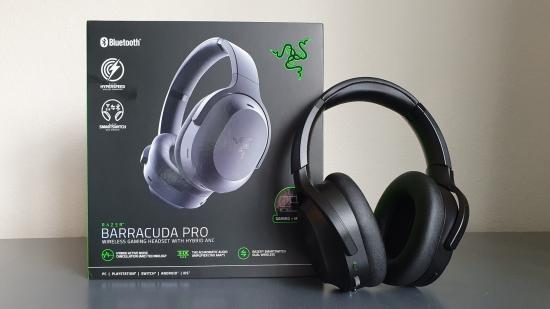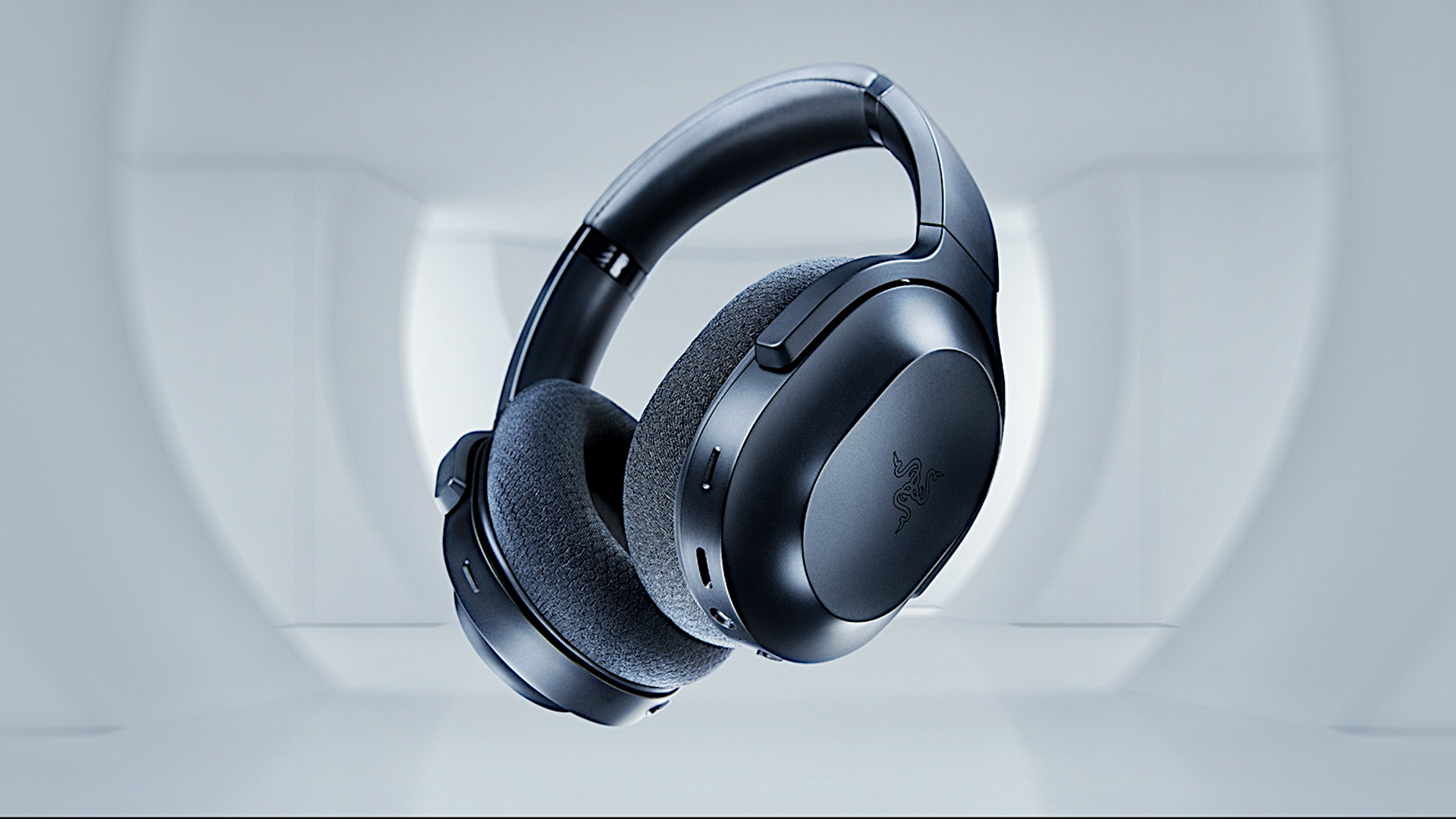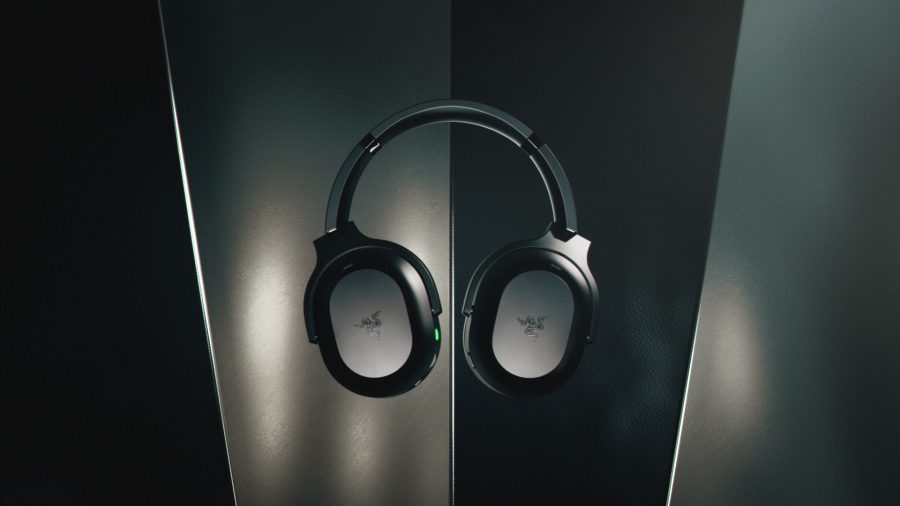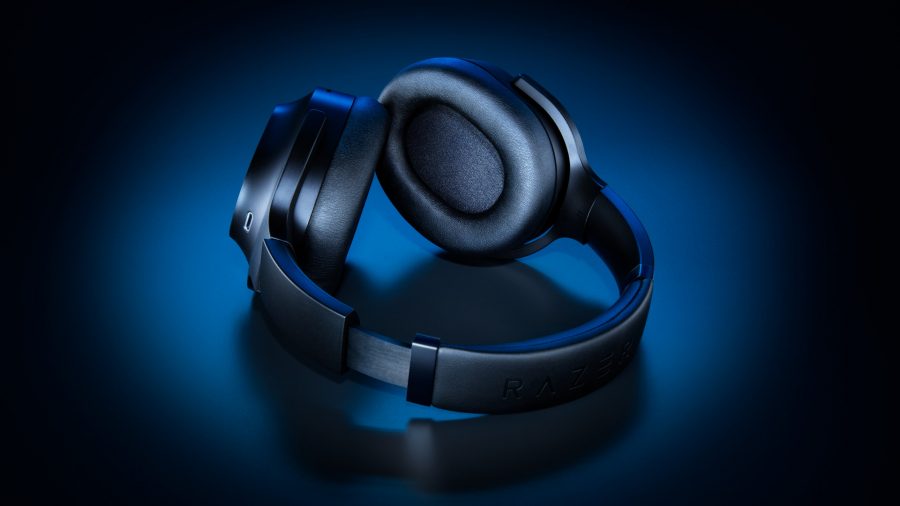Our Verdict
The Razer Barracuda Pro boasts great sound quality and looks, but its integrated microphones and lack of wired connectivity make this expensive headset feel less premium than it should
The Razer Barracuda Pro is the company’s latest wireless gaming headset, acting as the flagship for its newly refresh line-up of cordless cans. Priced at $250 USD, Razer is betting big on its active noise-cancelling technology and new TriForce Bio-ceullulose 50mm drivers to deliver an experience worthy of its premium price tag. Thankfully, it’s mostly succeeded in doing just that, but not without some notable shortcomings.
When I first laid eyes on the Razer Barracuda Pro, I sighed with relief at the lack of RGB and other aesthetic features typically associated with gaming headsets (which have no business being anywhere outside a gaming PC setup). Razer has adopted a more subtle design language here compared to its other devices, with logos that blend into the black headband and earpieces. Look closely, however, and you’ll find a cheeky splash of trademark neon green surrounding the microphone’s mute toggle.
The shape of these new cans most closely resembles the company’s Razer Opus headphones, which were themselves clearly inspired by the Sony WH-1000XM3. While I haven’t had chance to sit down with the Opus, I use a pair of 1000XM3s as my daily drivers and think Razer has done a great job of emulating the style and best parts of its rival.
Despite being one of the heaviest gaming headsets I’ve ever used at 340g, the Razer Barracuda Pro never feels uncomfortable to wear, whether I’m on a busy train or sat at my gaming desk. Sure, when I put them on I don’t forget that I’m wearing them, but the large oval ear cups, leatherette memory foam ear pads, and headband padding kept me plenty comfortable during extended periods of use. It doesn’t have unbearable clamping force, either, which is a plus.
| Barracuda Pro | Barracuda | Barracuda X | |
| Drivers | 50mm (Razer TriForce Bio-Cellulose) | 50mm (Razer TriForce Titanium) | 40mm (Razer TriForce) |
| Frequency response | 20Hz – 20,000Hz | 20Hz – 20,000Hz | 20Hz – 20,000Hz |
| Connectivity | 2.4GHz / Bluetooth 5.2 | 2.4GHz / 3.5mm / Bluetooth 5.2 | 2.4GHz / 3.5mm / Bluetooth 5.2 |
| Battery life | Up to 40 hours | Up to 40 hours | Up to 50 hours |
| Weight | 340g | 300g | 250g |
| Price | $250 | $160 | $100 |
You can connect the Razer Barracuda Pro to your system via Bluetooth or by using the included 2.4GHz USB-C dongle. The headset will sound great regardless of your connection type, but you’ll want to use 2.4GHz for the best experience in terms of audio quality, features, and latency. However, you can connect these cans to two devices simultaneously, such as your gaming PC and phone, and easily swap between them with two presses of the Razer SmartSwitch button on the right ear cup.
This brings me on to my first major complaint regarding the Razer Barracuda Pro, which is the lack of any wired connectivity. Gone is the ever-reliable 3.5mm audio jack, and its USB-C port can only be used for charging. I understand that Razer isn’t the only company culling analogue inputs, but what makes this omission more perplexing is that both of the less-expensive models in the Barracuda range both support the tried and true standard. So, in addition to giving you a degree of anxiety when it comes to the headset’s battery, the Barracuda Pro in some ways offers less than its cheaper counterparts.
Thankfully, Razer says the Barracuda Pro has a battery life of up to 40 hours. This will obviously be slightly lower when you use features like ANC or THX Spatial Audio (more on those later), but you can always check how much charge you have left in Razer Synapse. Additionally, the headset will let you know via an audio notification whenever its battery level falls to 20% or lower, so it gives you plenty of warning when it’s time to charge it up. In my admittedly limited experience, I was able to get around 30 or so hours of playtime before charging the headset overnight from 16% to full.
Before we dive into how the Razer Barracuda Pro sounds, I want to quickly talk about its microphones. Yes, plural. Dual-integrated noise-cancelling microphones take over the responsibility of delivering your comms in place of a more standard cardioid mic. When asking my friends how I sounded when using the headset on Discord, they weren’t impressed with the audio quality. I’m inclined to agree with them. Even after playing with the various equalizers and enhancements in Razer Synapse, I couldn’t help but feel that my voice was doomed to sound okay at best when using the Barracuda Pro.
If this headset didn’t cost $250 I’d be more forgiving, but it’s hard to ignore cheaper offerings from competing options like the Corsair HS80 that offer microphone quality leagues above the Razer Barracuda Pro. To be clear, the mics here aren’t bad, and are more or less on par with what you’d expect from noise-cancelling headphones and not from the best gaming headset at this price.
So, without further ado, let’s talk about audio quality. After plugging in the USB-C 2.4GHz dongle into my system and updating Razer Synapse, I opted to test the headset’s audio capabilities with some tunes while I waited for some game updates to finish downloading. A couple of seconds into Daft Punk’s ‘Give Life Back to Music’, I winced and immediately paused the track, diving into the settings menu to find out whatever processing shenanigans Razer had applied.
I quickly discovered that THX Spatial Audio was to blame for my musical misfortune, as the headset had automatically applied a virtual surround sound profile to all music applications. This is easily addressed by selecting ‘Stereo Mode’ from the ‘Spatial Output’ dropdown menu, and the Razer Barracuda Pro was finally ready to show me what it could do. I’m thoroughly impressed by its (sort of) out of the box sound, and its ability to deliver a surprisingly balanced sound signature with no audible distortion.
The Razer Barracuda Pro is able to deliver a great audio experience across a multitude of genres, from the soaring highs of violins and vocals in Classical to the kick drums of Hip Hop and Metal. To be clear, audiophile headphones these most definitely are not, and some may find the lack of head-rumbling bass disappointing (even with bass boost enabled). However, I can confidently say that I would happily listen to music on them over the vast majority of other gaming headsets out there.
I had a very similar experience while consuming video content as well, whether it was something from YouTube or a streaming service. While I will admit that the effect of THX Spatial Audio doesn’t feel as wrong with video as it does with music, I don’t feel as though it particularly enhances the experience either. Again, I preferred how the Razer Barracuda sounded once I swapped to the stereo mode and never looked back.
After getting a taste of how the Razer Barracuda Pro sounded with multimedia, I booted up Call of Duty: Warzone and wasted no time ploughing through some matches. I’m shocked at how well THX Spatial Audio is able to expand the headset’s soundstage without completely destroying its frequency response, as I’ve often found to be the case with other virtual surround sound software. The processing gives low frequencies a boost, making explosions feel more impactful, with very high frequencies suffering only very slightly.
Open-world games like State of Decay 2 particularly benefitted from THX Spatial Audio, with its large and varied environments feeling that much more expansive thanks to the increased sound stage. For the most part, the TriForce Bio-cellulose 50mm drivers perform wonderfully no matter what genre I throw at them. However, Hunt: Showdown proves to be an exceptional case as I found the game generally sounded worse with virtual surround sound, but this is quickly rectified by swapping back to stereo mode.
Finally, let’s talk about the headset’s ANC. The quality of the noise-cancelling comes very close to matching my Sony WH-1000XM3s, which is not something I expected at all. Whether I’m hoping to block out the ambient sounds of a busy train, passing traffic, or my partner taking a call, the Razer Barracuda Pro blocked a sizeable chunk of unwanted noise. Better still, it doesn’t detrimentally affect its sound quality either when I’m listening to music or watching a video. So, kudos to Razer here.
I expected great things from the Razer Barracuda Pro, and it delivers on many fronts with its fantastic audio quality, surprisingly good virtual surround sound, and mature design. That said, its middling microphone holds it back from being one of the best gaming headsets on the market, in addition to its lack of wired connectivity and inarguably high price point.




